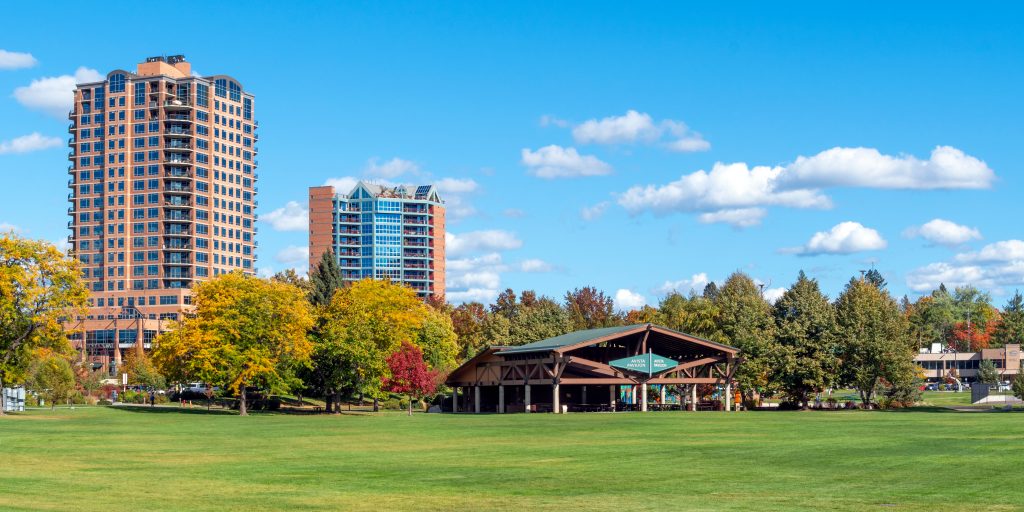Balancing pre- and post-COVID municipal planning strategies
The pandemic is the biggest challenge to face municipal planners in living memory. Even in the rosiest of times, keeping a municipality running effectively and meeting a community’s needs requires careful planning and diligent execution. Now, with the added stresses and dangers of COVID, that work has become exponentially harder.
Although municipal planning has become more difficult, it hasn’t evolved into something unrecognizable. While some municipal leaders may be tempted to discard their old strategies and start from scratch, many pre-COVID strategies remain effective. They just need to be adapted for our new world.
As you plan for upcoming projects in your town or city—from welcoming new developments, to reimagining public spaces—consider these three tips for balancing pre-COVID approaches with post-COVID realities.
Invest in neighborhoods
Neighborhoods have always been the heart of municipal planning, pandemic or no pandemic. That remains true today—in fact, even more so. With so many professionals now working from home, people are spending more time in their local environments. As a result, municipal planners can shift some attention away from commuter projects and toward projects that engage people with the world immediately around them.
For example, planners in Paris, France, are championing the concept of “15 minute neighborhoods”—areas where all the basic services needed to live are within a 15 minute walk of most residences. These services can include grocery stores, shopping and recreational space. Similarly, planners in Montevideo, Uruguay, are introducing sanitizing stations, bike repair stations and solar phone chargers in neighborhoods. These serve residents, but also the delivery workers who now frequent neighborhoods.
Prioritize outdoor spaces
Beautiful green space should always be top of mind for municipal planners. With social distancing and the challenge of indoor gatherings, however, it became even more important. Planners should prioritize and pay special attention to projects with outdoor space potential. Allowing restaurants to expand onto sidewalks; temporarily closing certain streets for pedestrians; creating outdoor entertainment options; and introducing more pocket parks are all worthwhile undertakings.
As you prioritize outdoor spaces, it’s essential to also prioritize equitable access. Public parks in major metropolitan areas are traditionally concentrated in wealthier communities, but that shouldn’t be the case. Ensure you’re building green spaces in places in ways that will benefit everyone in the community, not just a select few.
Need inspiration? Consider Lincoln Center’s recent Restart Stages project in New York City. The performing arts center developed 10 performance spaces and put on several shows. This entailed transforming Josie Roberton Plaza outside Lincoln Center into a participatory public art installation called The GREEN, complete with a false-grass lawn. The project effectively created a park out of a concrete plaza, giving the community a safe place to gather.
Other clever ideas can be found in Bogotá, Colombia, where the city transformed nearly 60 miles of streets into accessible bike lanes for residents. And in Oakland, Calif., the city extended its Oakland Slow Streets program and closed nearly 10 percent of its streets to cars, providing coveted outdoor space for pedestrians and cyclists.
Welcome new arrivals
A key part of planners’ role is to ensure their municipality can attract—and keep—new residents. And amid the pandemic, many smaller municipalities saw a lot of new residents. According to Bloomberg News, thousands of Americans left major metropolitan areas for smaller communities in 2020.
As towns and cities always have, ensure yours accommodates the needs of new neighbors. For example, if the demographics of your city are now skewing older or younger, plan accordingly. Also, now is the time to double down on investing in community-oriented spaces like libraries and parks. These spaces provide an opportunity for new residents and long-time residents to cross paths, mingle and form bonds.
The pandemic has introduced countless changes to our lives, but it doesn’t have to upend municipal planning. Rather than tossing out tried-and-true strategies, planners should adapt them to the new world we live in. Indeed, many of those tried-and-true strategies work just as well—or better—today.
Celeste Frye, AICP is co-founder and CEO of Public Works Partners LLC, a WBE/DBE/SBE certified planning and consulting firm specializing in multi-stakeholder initiatives and building strong connections across the government, nonprofit and private sectors. For more information, visit www.publicworkspartners.com.





















A key part of a planners role is to explain the impacts & outcomes from their long-term “Vision”, involving their failed “urban planning” & ” economic development” model, leading to widening structural poverty, poor upward mobility, & poor socioeconomic outcomes.